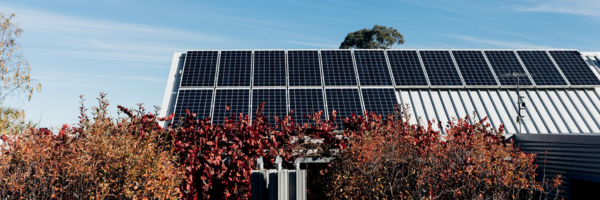A solar feed-in tariff (FiT) is the amount you earn per kilowatt hour (kWh) of electricity from putting solar energy generated from your home solar panels back into the electricity grid. These rates vary based on which state or territory you live in, your energy retailer and your electricity plan.
Depending on how much energy you send back to the grid, solar feed-in tariffs have many benefits, including reducing your electricity bills and receiving credit for the extra energy sent.
In August last year, we increased our FiTs. While many electricity providers have been following the downward trend, slashing FiT rates to as low as 4.8 c/kWh in Victoria, Indigo Power has taken a different approach, raising our FiT from 5.2 c/kWh to 7.2 c/kWh in Victoria and from 7.4 c/kWh to 12 c/kWh in New South Wales.
Why have FITs been decreasing?
We are often asked why FiTs have been decreasing. In Victoria, the FiT floor is set by the Essential Services Commission (ESC), which does comprehensive modelling each year to determine a fair price for solar exports (feed-in). This fair price is called the minimum FiT.
The ESC modelling attempts to match the minimum FiT to the fair wholesale electricity price for solar exports. The National Electricity Market (NEM) now often has an oversupply of electricity during times of high solar production (on sunny days). This means that the wholesale electricity price is very commonly negative during the middle of a sunny day. The value of solar export and the minimum FiT, have been dropping to match low electricity prices in the NEM at times of high solar production. The ESC’s minimum FiT gives household solar customers a little boost above the expected wholesale electricity price that larger market participants can expect to receive, adding $25/MWh for the ‘social cost of avoided carbon and human health impacts’.
So, the short answer is that solar electricity is worth less and less and FiTs reflect this declining value. We expect this trend to continue.
Why did Indigo Power’s FiT go up?
Despite the trend towards reducing FiTs, we increased our FiT in August. We need to buy our electricity from either our solar customers or a large electricity generator through our hedging arrangements. Our hedging arrangements are more expensive because they offer a fixed price, allowing us to manage risk. If we buy a unit of energy from a customer with solar, which we can share with a non-solar customer, we need to buy one unit less through our hedging arrangements. This means that solar is worth more than its wholesale value, provided we have a customer to share the energy with. However, there are times in the middle of the day when Indigo Power has so much solar that we do not have a customer to sell it to – you can see this in the ‘Exports – Other’ bar in the energy sharing portal. We receive the wholesale price for the exports that aren’t shared with other Indigo Power customers. Each year we run a calculation to determine a fair FiT, taking these effects into account (the hedging prices, the declining daytime wholesale prices, and how much of our customer’s solar export is shared with other customers). This year, the calculation showed that we could increase the solar FiT.
What can we expect in the future?
We expect the trend towards low daytime FiTs to continue but for new FiT structures to emerge to support electricity exports at times of high demand. For solar customers, these FiT structures will incentivise export earlier in the morning and later in the afternoon and self-consumption, EV charging, or battery charging between 10am and 3pm. Those with batteries will be able to benefit by exporting electricity across the early evening peak, between 5pm and 8pm. Already we see this happening in New South Wales, where some business customers in the Essential Energy distribution network (almost all of NSW outside of Wollongong, Newcastle and Sydney) will benefit from a 15 c/kWh network rebate between 5pm and 8pm, from July 2024. Add in the current Indigo Power FiT of 12 c/kWh and battery owners will be able to secure a 27c/kWh ex GST feed-in tariff between 5pm and 8pm. On this tariff, it may be more profitable to export battery energy in the evening peak than to save it to avoid grid usage overnight!
We’ll have more information about trends in electricity prices and household batteries in future blog posts. But for now, customers should not be discouraged about FiT changes. The electricity industry is in transition and electricity tariff structures are rapidly changing. Those with solar will have plenty of opportunities in the future as the technologies and software to control household load and residential batteries become cheaper and easier to deploy.
The future of electricity is bright!

